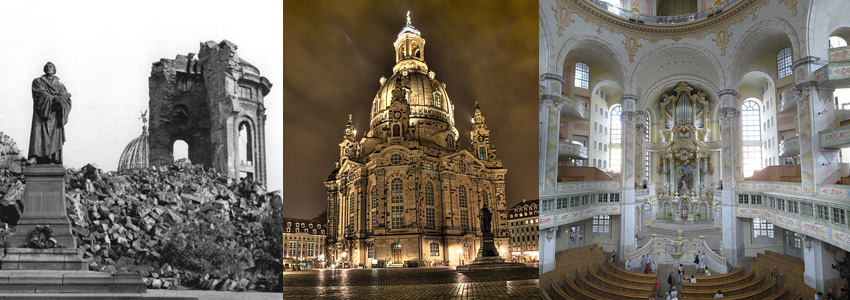
There’s a church in Dresden called Frauenkirche (translated “Church of our Lady”) which was bombed on February 15th, 1945 during WWII. The church sat in ruins for 50 years until the reunification of Germany. But in 1989, a 14 member group under the leadership of a musician named Ludwig Güttler formed the Citizen’s Initiative for the reconstruction of the church. This grew into more than 5000 members, spanning more than 20 countries. The church was finally completed in 2005 and stands as a memorial to the world as a collaborative project of art, archaeology, faith and unification.

One of the teams involved in some of the more detailed aspects of carvings within the church were employed recently by Bechstein in a spectacular million dollar piano reproduction of another kind. In 1886, Bechstein had made a one-of-a-kind piano for an exhibition in London called the Sphinx. Similar to the story of the Dresden church where the reproduction was based on photographs, all that remained of the Bechstein instrument was a single image. Bechstein decided to remake a present day version of this 130 year old original.
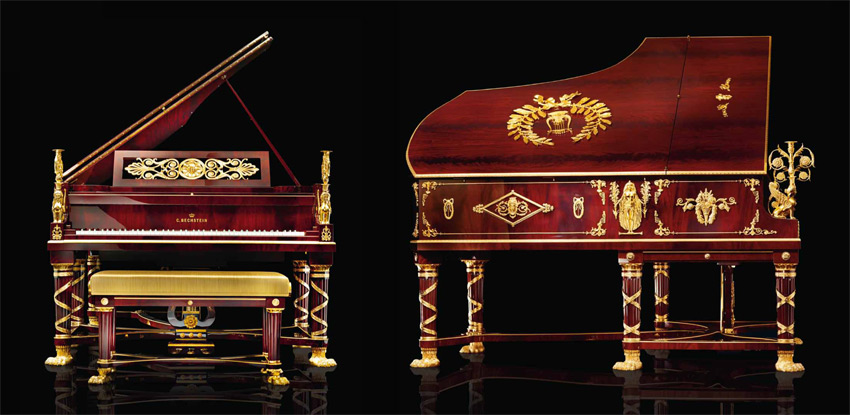
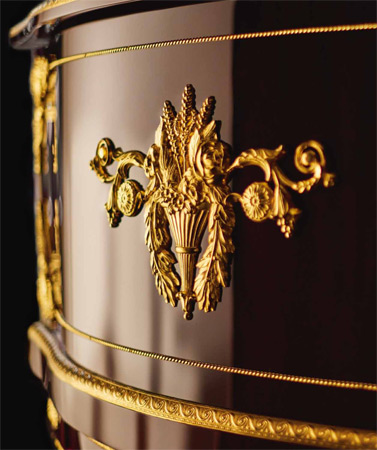
The features of the grand are similar to any world class C.Bechstein: the cabinet contains the feathered lines of pyramid mahogany, ciresa spruce soundboard, beech and mahogany rim, Renner action and hammers, with a traditional sand-cast iron plate. But what sets apart this piano is the cabinetry finesse involving a process called “lost wax”. This is more specifically where the team from the Frauenkirche comes in. 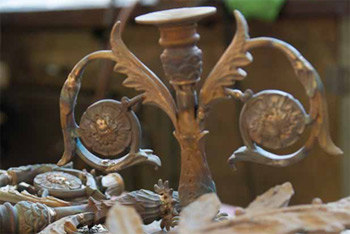 Decorative elements are first carved out of wood and “dry-fit” meaning that they ensure that the parts will fit correctly after they become cast in bronze. The sculptured wooden parts then become the model from which a master mould is made. Wax is used to make models of the various pieces and when the bronze is cast, the wax evaporates through a process called metal-chasing.
Decorative elements are first carved out of wood and “dry-fit” meaning that they ensure that the parts will fit correctly after they become cast in bronze. The sculptured wooden parts then become the model from which a master mould is made. Wax is used to make models of the various pieces and when the bronze is cast, the wax evaporates through a process called metal-chasing.
The once carved wooden pieces are now identical replications in bronze. But Bechstein didn’t stop here. The pieces were then fire gilded with gold. Once they are heat-treated, the gold pieces turn a dull yellow. The vibrant gold only reappears through polishing by hand and through the use of polishing stones. After 32 months and 1800 work hours later, the Sphinx was unveiled.
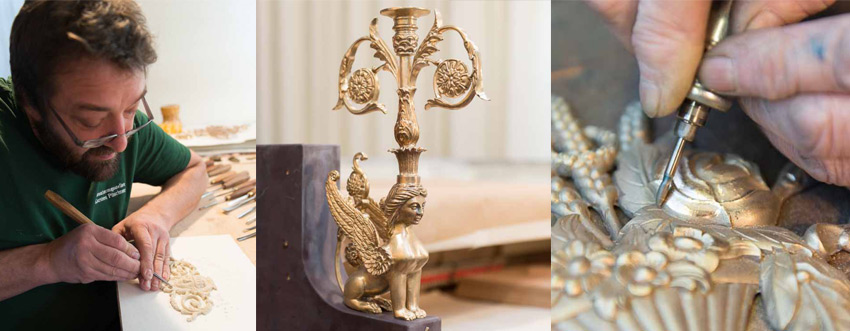
Appropriately named, the Sphinx is a Greek mythical creature that represents mystery and wisdom. Truly, this piece by Bechstein reveals their manufacturing prowess, their wisdom of 163 years (est. in 1853) and their ability to continue to amaze the world with their artistic flair.







The Price for this magical piece? 1 Million Euro (Approximately $1.12 million US dollars)
For more information on the piano, you can
download the full pdf.
To see the Sphinx being played, watch the
video on YouTube.
The
full line of C.Bechstein pianos can be viewed on Piano Price Point
More Piano Articles

During the performance of Jacob Collier at the most recent NAMM show I was reminded that music makes us human, that beauty binds us together as a collective, and that the reason the music industry exists is to aid in the creation of art. I needed that reminder without which, the annual trade show featuring many of the great piano makers is just the sale of wares. I believe that people are feeling the uncertainty ...
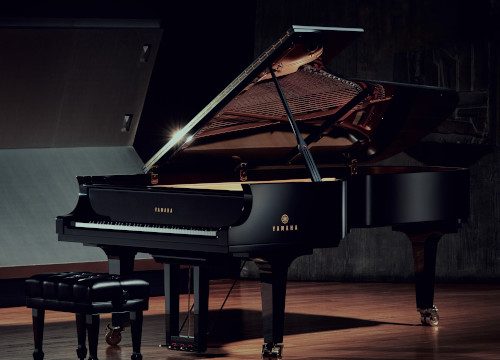
I used to have a teacher who would frequently say, “For every single grade point PAST 80%, it takes as much effort as the FIRST 80.” I believe this statement to be true from experience. The first 80 is the easiest. Chipping away at every point past that is the challenge. The bulk of the work can bring a project into shape but it’s the pursuit of excellence, that’s where the challenge lies. Yamaha is ...

The value of a piano is obvious ~ it’s the music that you make with it. But often, families are going through life changes which involve a house move and unfortunately, the piano needs to be sold. They invariably ask the question, “What are we going to do about the piano?” This question comes up because, as you can imagine, they’re not easy to move. We don’t simply pack them away in a cardboard box ...

You’ve been playing your piano for years now and the time has come to seriously consider downsizing the house and move into a condo. But what do you do with the piano? You love your piano and can’t imagine life without it and besides, you absolutely hate the idea of playing a digital keyboard. Many people don’t know that you can add digital functionality without compromising your existing piano. Yes, it is completely possible to ...

Many years ago, I remember seeing a piano in a museum similar to the one shown above (built in 1787 by Christian Gottlob Hubert. On display at Germanisches Nationalmuseum - Nuremberg, Germany). I have often wondered why acoustic portable pianos never really took off. Although we've seen more portable keyboard instruments like harpsichords, accordions or electronic keyboards, they operate completely different from a traditional piano in that they either pluck the strings, use air with ...

This was the first year since covid that the National Association of Music Merchants (NAMM) trade show was back to its regular January date and, in fact the first show where it felt back to normal. How was it? To answer that, I'm going quickly review the piano market over the last few years. Piano sales boomed during covid. Think about it - everyone was at home and with time on their hands, many turned ...